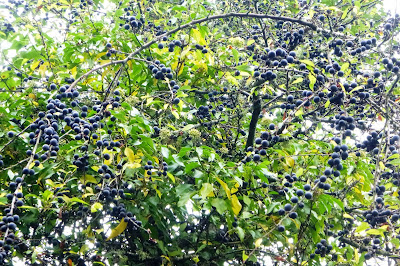Christmas is coming and thanks to our virtually Paleo diet (that bit is probably a lie), we hopefully won't get too fat.
We chopped down and decorated a small tree; the children gathered plenty of greenery and made a wreath for the front door.
We also harvested enough mistletoe to bring the love into our house during the Halcyon days and well into the New Year. We spread plenty around our neighbours and friends too.
I have been very industrious in my bottling of Sloe Gin, Taybury Gin, Mullberry Gin and Cherry Vodka. It all looks very stylish in neat square little bottles.
Meanwhile my wife was making mincemeat with the children and we soon had a tray filled with hot mince pies to add to the mix, this made the house smell very seasonal.
I made several bottles of Mulled Wine. This time I used 2013 Elderberry Port as a base and poured it over the Sloes that were left after bottling the Sloe Gin. I added some nutmeg, cinnamon, all spice and cloves and left it to soak for a couple of weeks. I then strained off the resultant potent brew and bottled it.
This archaic alchemical potion won't just warm the cockles of the heart, it will blow the bloody doors off it! Perfect with Mince Pies when visiting friends...
Have a Super Solstice a Cool Yule and a Happy New Year! x0x0
 |
| Now, That's a Christmas Tree! |
Don't forget to put, the Urbane Forager book on your Christmas present list.
Order your copy now!
You can buy this lovely book for your friends and family from all good book-stores or Amazon.
Author: Alan Gibson
ISBN: 978-1-78507-300-7
The best Urbane Forager images are now on Pinterest. Please follow & share.





















































